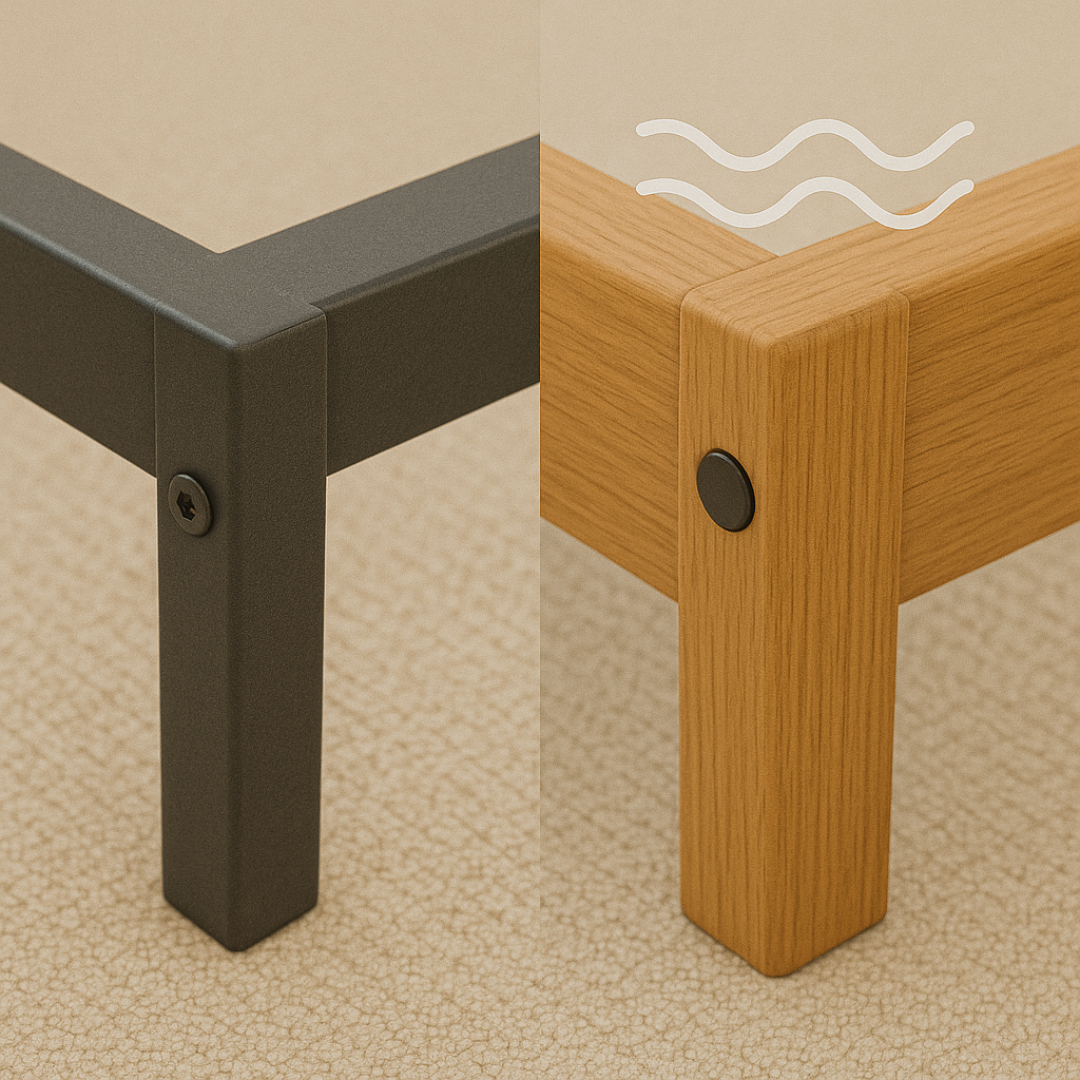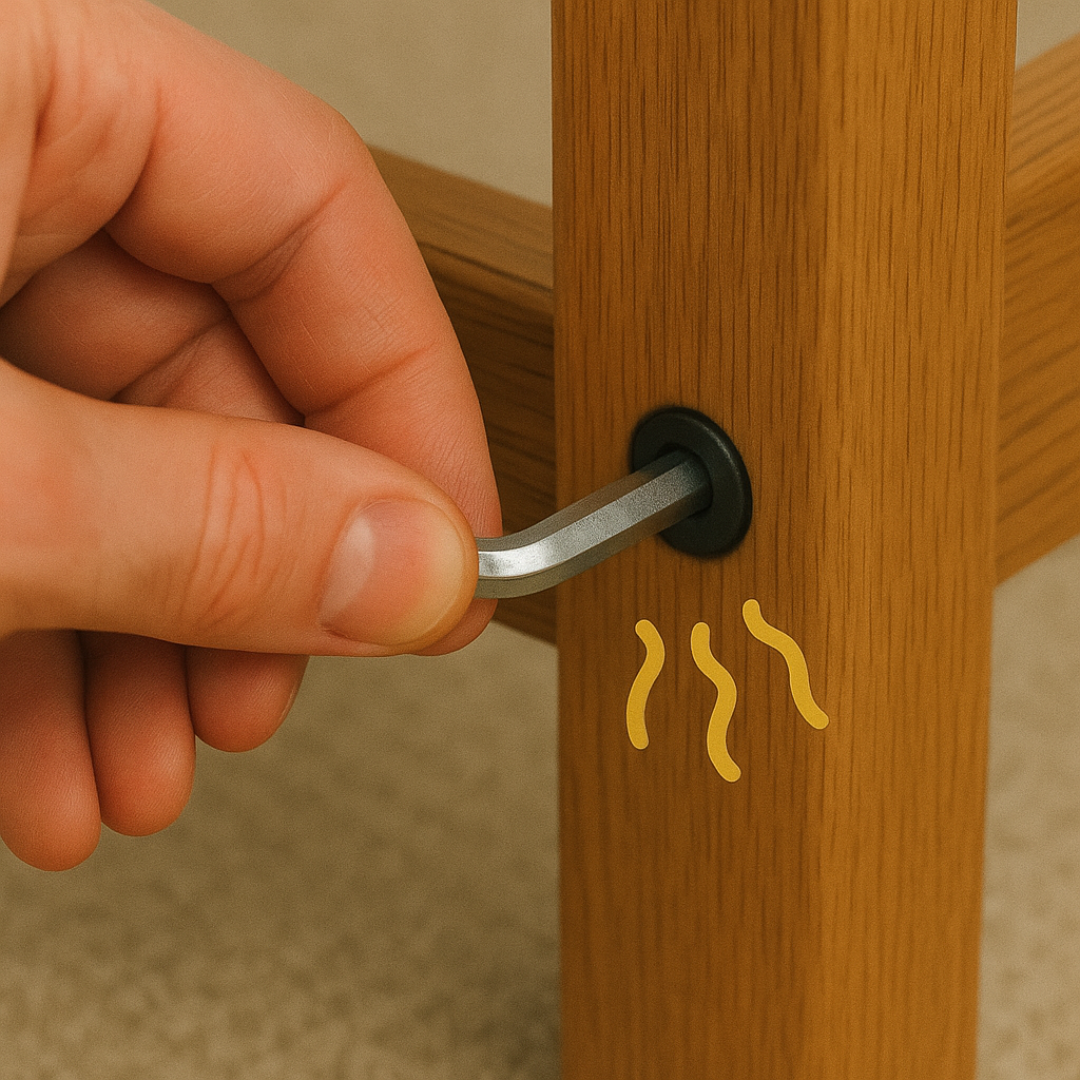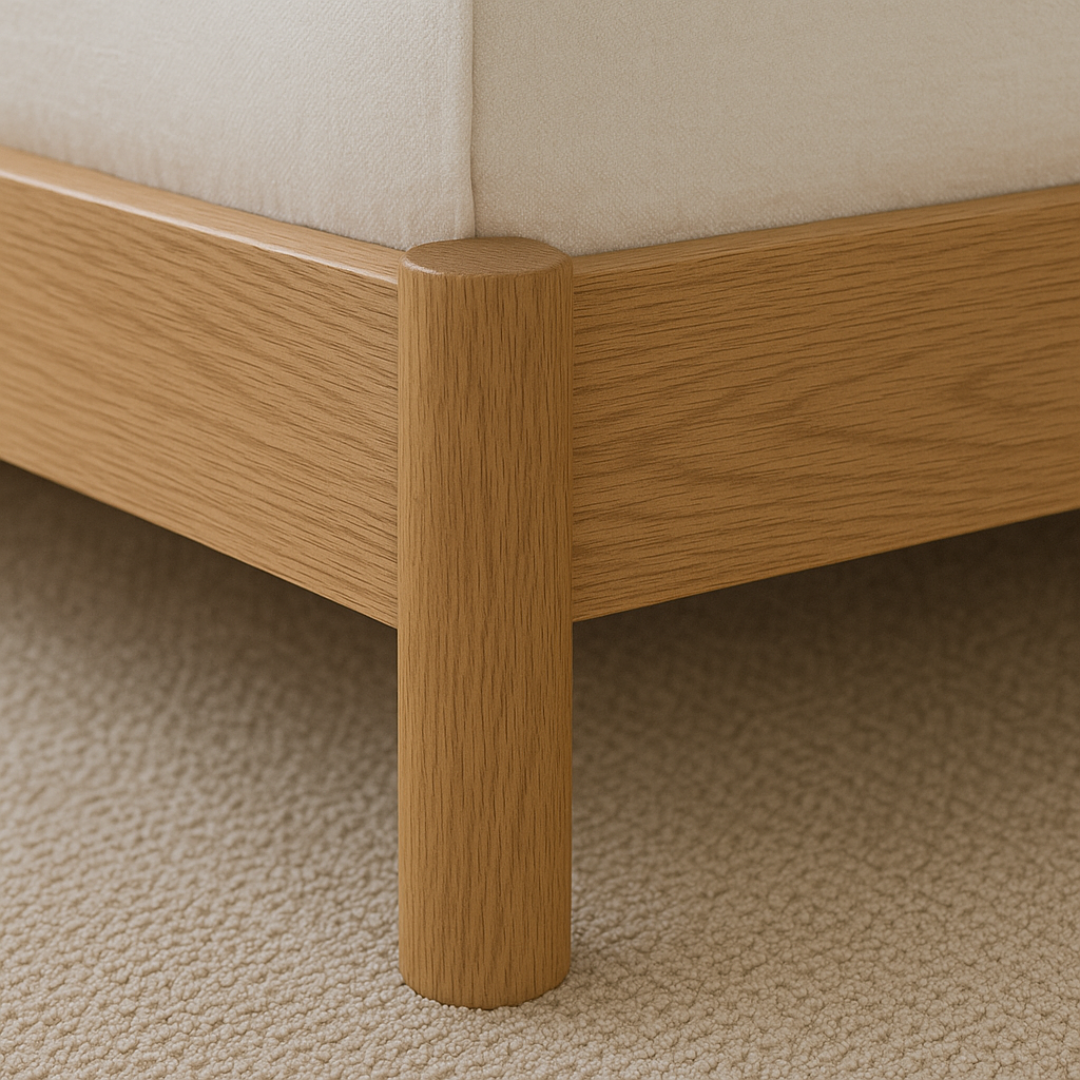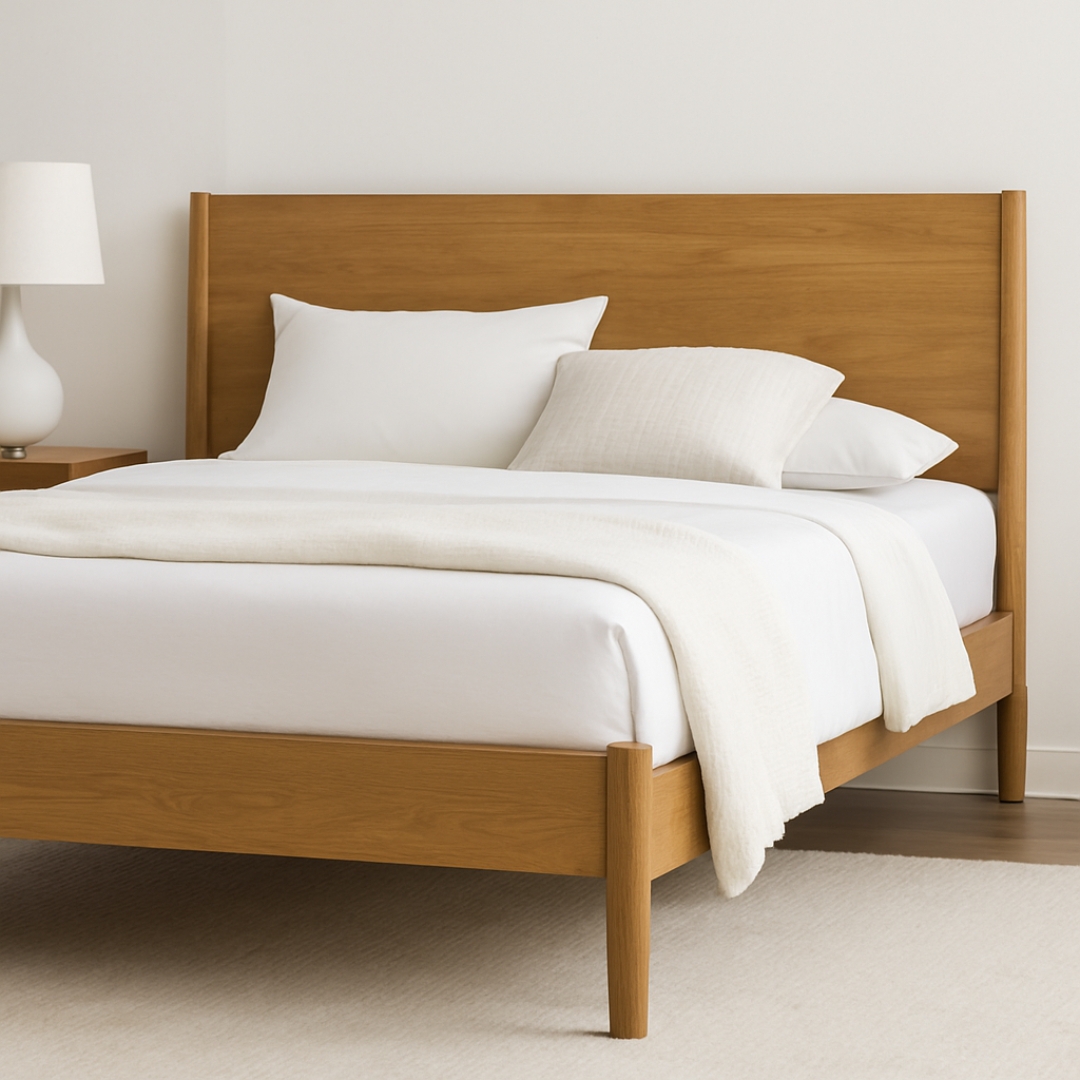Why Frame Material Matters for Your Sleep Experience
Selecting a metal bed frame or a wooden bed frame isn’t just about looks. It influences your bed’s strength, stability, maintenance, longevity, and noise level. Understanding these differences helps you sleep better and invest wisely in your bedroom setup.
Head-to-Head: Durability and Strength
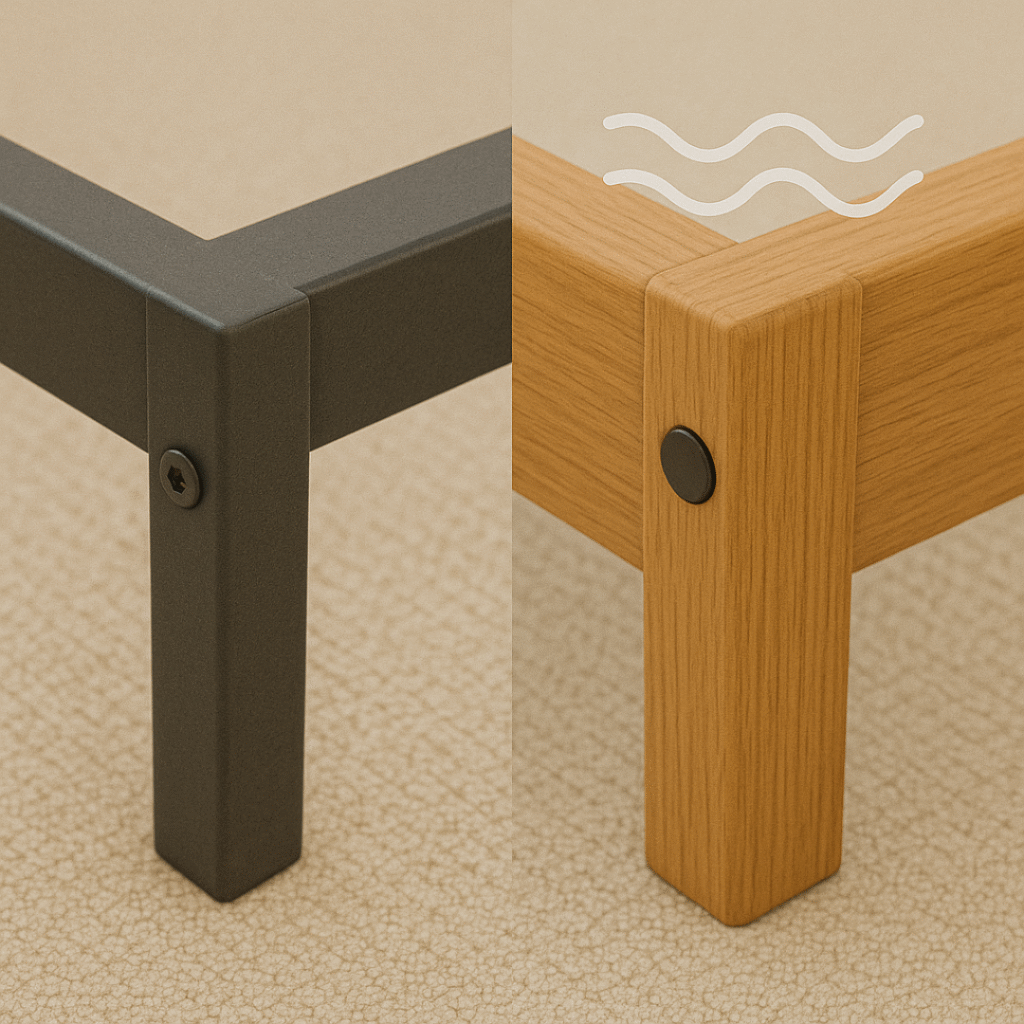
Steel Bed Frame Durability
Pros
- High weight capacity: Ideal for heavy mattresses or multiple sleepers.
- Warp-resistant: Metal won’t twist or crack over time.
- Long lifespan: Powder-coated finishes resist rust and wear.
Wooden Bed Frame Longevity
Pros
- Timeless appearance: Oak, maple, walnut ages beautifully.
- Silent in use: Natural wood absorbs sound better than hollow metal.
- Eco-friendly option: Solid wood frames are renewable with minimal off-gassing.
Cons
- Seasonal movement: Wood may expand/shrink in humidity changes—tighten joints regularly.
Noise Comparison: Which Stays Quieter
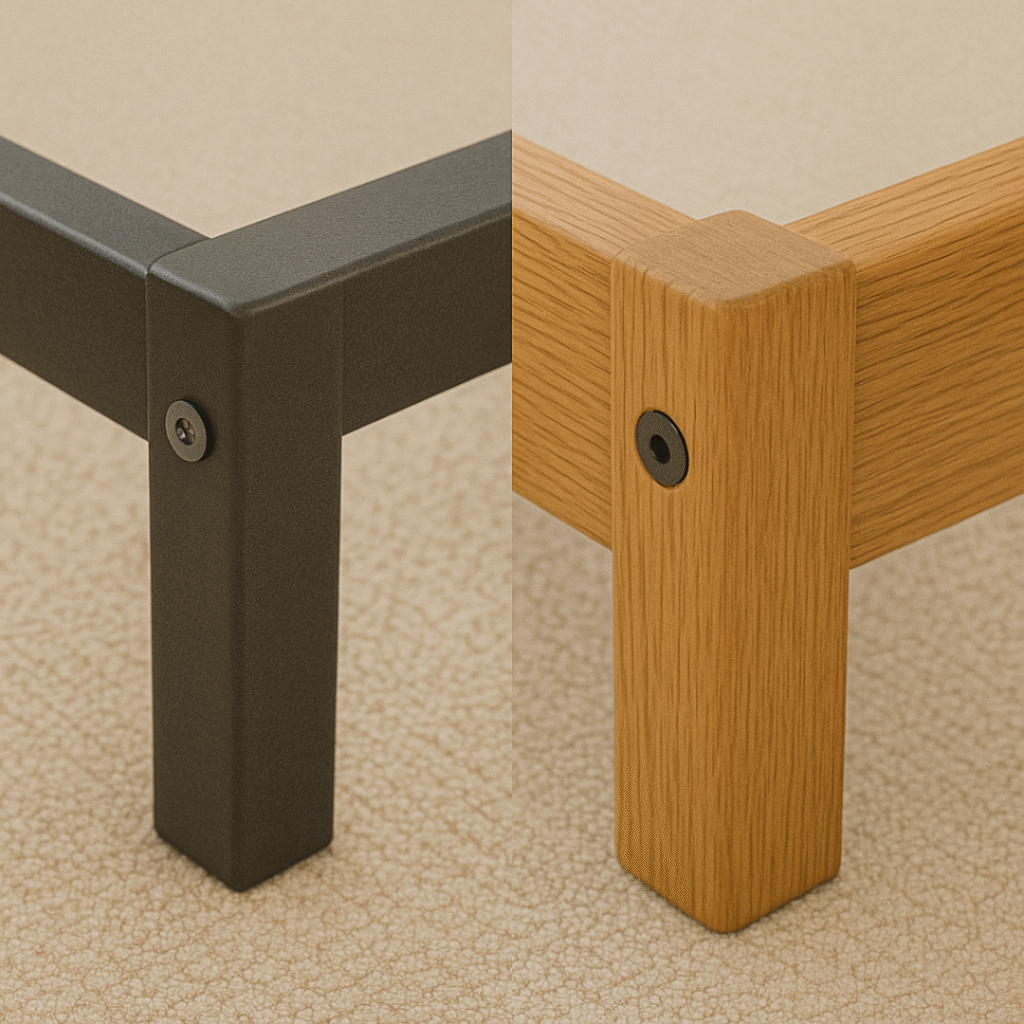
Metal vs Wood Noise Behavior
- Metal frames may creak where joints rub—choose welded designs or rubber isolators under slats.
- Wooden frames are naturally sound deadened but can squeak if screws loosen or wood shrinks.
Support System & Slat Spacing
Platform Compatibility
Both frames work with memory foam, latex, and hybrid mattresses if slats are ≤ 3″ apart or use a solid deck.
Center Support & Legs
Both types need central rails with 3–5 legs to avoid sagging. Metal may use welds; wood often has mortise or center beams.
Assembly & Portability
Steel Frames
Often heavier—but modular screw-in pieces may reassemble easily.
Look for tool-free systems like the emBrace® 360 for frequent rearrangement.
Wooden Frames
Heavier bulk but limited to bolt assembly.
Choose knock-down wood frames for easier transport.
Aesthetic & Practical Use
- Steel: Sleek industrial look, fits minimalist and modern decor.
- Wood: Varies from Scandi to farmhouse; can be matched to flooring.
- Mixed styles: Metal frame with wood headboard merges strengths.
Maintenance Tips for Longevity
- For Steel: Wipe with damp cloth, avoid rust spots, tighten bolts every 6 months, use felt washers under metal slats.
- For Wood: Dust regularly, avoid humidity swings, retighten bolts, apply wood balm—or reapply finish if needed.
Conclusion
Choosing between a steel bed frame vs wooden bed frame depends on your priorities. Steel delivers unmatched durability and portability, while wood offers natural quiet and warmth. Hybrid designs may offer the best of both worlds. Whatever you choose, proper support structures, noise reduction measures, and regular upkeep ensure peaceful, reliable sleep for years.
FAQs About Steel Bed Frame vs Wooden Bed rame
Are steel bed frames more durable than wood?
Yes—steel frames generally have higher weight capacity and resist warping.
Do wooden bed frames squeak less than metal ones?
Typically—but proper assembly and maintenance reduce noise in both types.
Which bed frame lasts longer—metal or wood?
Steel often lasts decades; high-grade hardwood frames can last just as long if well maintained.
Can metal bed frames cause more noise over time?
They can—but rubber bushings or welded joints significantly reduce squeaking.
Is a wood bed frame better for memory foam mattresses?
Yes—when equipped with <3″ slat spacing or solid platforms to support foam evenly.

